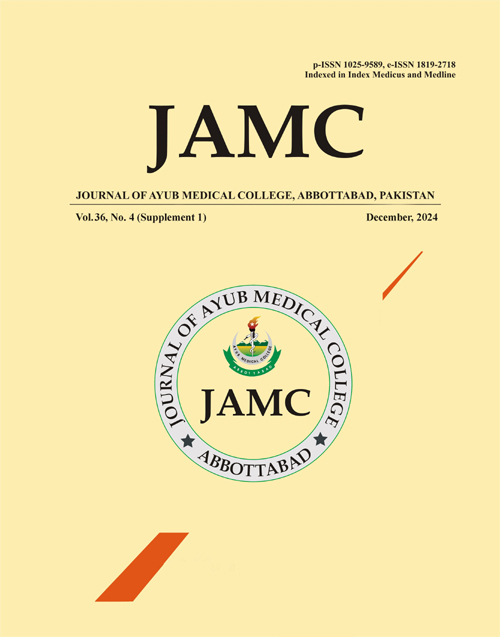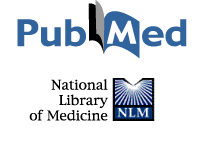LONG-TERM OUTCOMES OF FRACTIONAL FLOW RESERVE-GUIDED PCI IN PATIENTS WITH MULTIVESSEL DISEASE
DOI:
https://doi.org/10.55519/JAMC-S4-14762Abstract
Background: Percutaneous coronary intervention (PCI) has long been a cornerstone in managing coronary artery disease (CAD), particularly in patients with multivessel disease (MVD). Traditionally guided by angiographic assessment, PCI strategies have evolved with the advent of fractional flow reserve (FFR), a physiological tool that quantifies the functional severity of coronary stenosis. This study investigates the long-term clinical outcomes of FFR-guided PCI in MVD patients, addressing a critical gap in existing literature that predominantly focuses on short- to mid-term results. Methods: A retrospective cohort of 300 patients diagnosed with MVD underwent FFR-guided PCI between 2010 and 2015. FFR measurements determined the need for intervention, with values ≤0.80 indicating hemodynamically significant lesions warranting PCI. Patients were followed for two years, with outcomes including mortality, myocardial infarction (MI), repeat revascularization, and major adverse cardiac events (MACE) assessed. Results: Findings revealed that patients with FFR <0.80 had more complex disease and required more extensive interventions, including higher rates of multi-vessel PCI and stent implantation. Despite similar procedural success, this group experienced significantly higher rates of repeat revascularization and MACE compared to those with FFR >0.80. Notably, deferring PCI in lesions with FFR >0.80 was associated with better long-term outcomes and reduced procedural burden. Conclusion: The study underscores the prognostic and economic value of FFR-guided PCI, demonstrating its role in optimizing treatment strategies, minimizing unnecessary interventions, and improving long-term cardiovascular health. These results advocate for broader adoption of FFR in routine clinical practice, especially in MVD cases where functional assessment enhances decision-making and patient outcomes.
References
1. Pijls NH, Fearon WF, Tonino PA, FAME Study Investigators. Fractional flow reserve versus angiography for guiding percutaneous coronary intervention. N Engl J Med 2009;360(3):213–24.
2. Tonino PA, De Bruyne B, Pijls NH, Siebert U, Ikeno F, Vant Veer M, et al. Fractional flow reserve versus angiography for guiding percutaneous coronary intervention. N Engl J Med 2009;360(3):213–24.
3. De Bruyne B, Pijls NH, Kalesan B, Barbato E, Tonino PA, Piroth Z, et al. Fractional flow reserve–guided PCI versus medical therapy in stable coronary disease. N Engl J Med 2012;367(11):991–1001.
4. Barbato E, Toth GG, Johnson NP, Pijls NH, Fearon WF, Tonino PA, et al. A prospective natural history study of coronary atherosclerosis using fractional flow reserve. J Am Coll Cardiol 2016;68(21):2247–55.
5. Sand NP, Veien KT, Nielsen SS, Nørgaard BL, Larsen P, Johansen A, et al. Prospective comparison of FFR derived from coronary CT angiography with SPECT perfusion imaging in stable coronary artery disease: the ReASSESS study. JACC Cardiovasc Imaging 2018;11(11):1640–50.
6. Bech GJ, De Bruyne B, Pijls NH, De Muinck ED, Hoorntje JC, Escaned J, et al. Fractional flow reserve to determine the appropriateness of angioplasty in moderate coronary stenosis: a randomized trial. Circulation 2001;103(24):2928–34.
7. Hannan EL, Wu C, Walford G, Holmes DR, Jones RH, Sharma S, et al. Incomplete revascularization in the era of drug-eluting stents: impact on adverse outcomes. JACC Cardiovasc Interv 2009;2(1):17–25.
8. Fearon WF, Bornschein B, Tonino PA, Gothe RM, De Bruyne B, Pijls NH, et al. Economic evaluation of fractional flow reserve–guided percutaneous coronary intervention in patients with multivessel disease. Circulation 2010;122(24):2545–50.
9. Pijls NH. Percutaneous coronary intervention of functionally nonsignificant stenosis: 5-year follow-up of the defer study. J Am Coll Cardiol 2007;49:2105–11.
10. Boden WE, O'Rourke RA, Teo KK, Hartigan PM, Maron DJ, Kostuk WJ, et al. Optimal medical therapy with or without PCI for stable coronary disease. N Engl J Med 2007;356(15):1503–16.
11. Stone GW, Maehara A, Lansky AJ, De Bruyne B, Cristea E, Mintz GS, et al. A prospective natural-history study of coronary atherosclerosis. N Engl J Med 2011;364(3):226–35.
12. Davies JE, Sen S, Dehbi HM, Al-Lamee R, Petraco R, Nijjer SS, et al. Use of the instantaneous wave-free ratio or fractional flow reserve in PCI. N Engl J Med 2017;376(19):1824–34.
13. Götberg M, Christiansen EH, Gudmundsdottir IJ, Sandhall L, Danielewicz M, Jakobsen L, et al. Instantaneous wave-free ratio versus fractional flow reserve to guide PCI. N Engl J Med 2017;376(19):1813–23.
Published
How to Cite
Issue
Section
License
Copyright (c) 2024 Muhammad Hasnain Iqbal, Naveed Yaqoob , Muhammad Fareed Khan, Wahab Anwar , Muhammad Fasih Ullah Khan

This work is licensed under a Creative Commons Attribution-NoDerivatives 4.0 International License.
Journal of Ayub Medical College, Abbottabad is an OPEN ACCESS JOURNAL which means that all content is FREELY available without charge to all users whether registered with the journal or not. The work published by J Ayub Med Coll Abbottabad is licensed and distributed under the creative commons License CC BY ND Attribution-NoDerivs. Material printed in this journal is OPEN to access, and are FREE for use in academic and research work with proper citation. J Ayub Med Coll Abbottabad accepts only original material for publication with the understanding that except for abstracts, no part of the data has been published or will be submitted for publication elsewhere before appearing in J Ayub Med Coll Abbottabad. The Editorial Board of J Ayub Med Coll Abbottabad makes every effort to ensure the accuracy and authenticity of material printed in J Ayub Med Coll Abbottabad. However, conclusions and statements expressed are views of the authors and do not reflect the opinion/policy of J Ayub Med Coll Abbottabad or the Editorial Board.
USERS are allowed to read, download, copy, distribute, print, search, or link to the full texts of the articles, or use them for any other lawful purpose, without asking prior permission from the publisher or the author. This is in accordance with the BOAI definition of open access.
AUTHORS retain the rights of free downloading/unlimited e-print of full text and sharing/disseminating the article without any restriction, by any means including twitter, scholarly collaboration networks such as ResearchGate, Academia.eu, and social media sites such as Twitter, LinkedIn, Google Scholar and any other professional or academic networking site.










